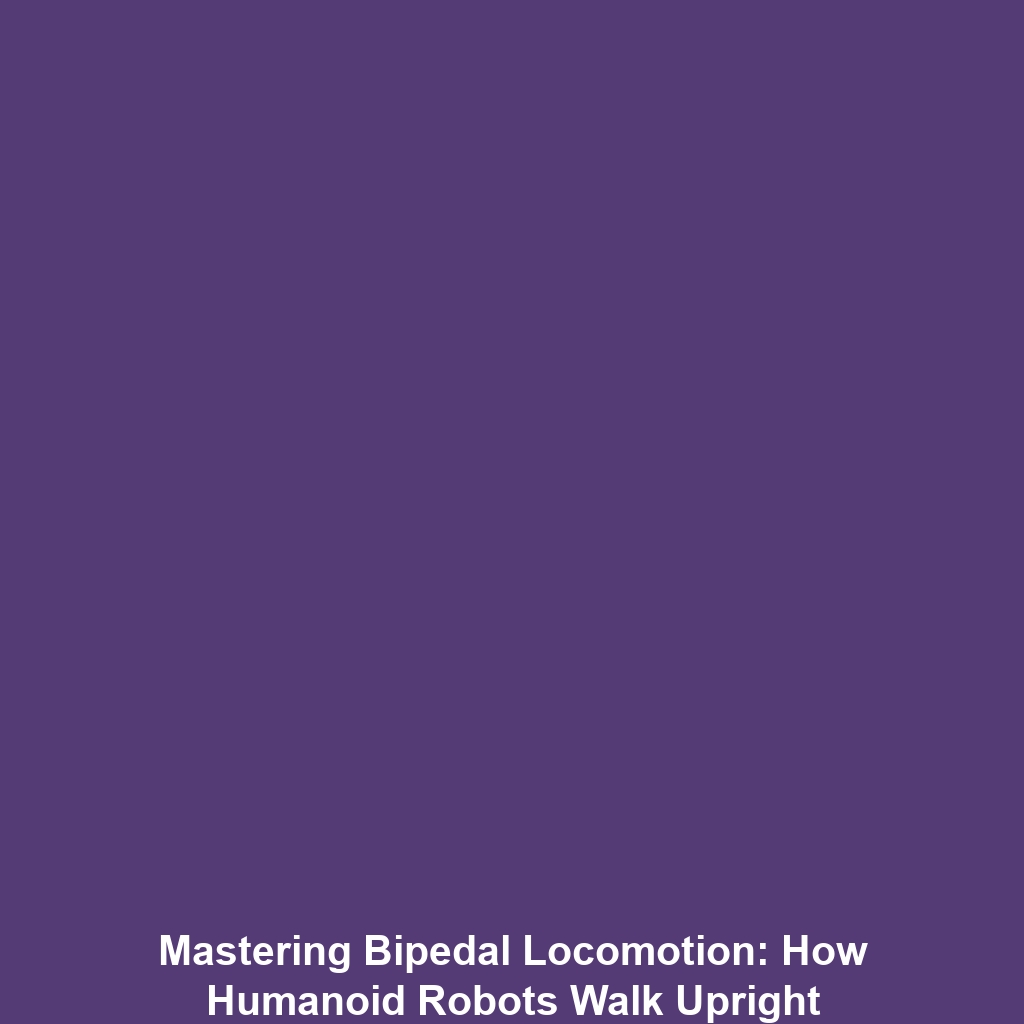Bipedal Locomotion: How Humanoid Robots Walk Upright on Two Legs Like Humans
Bipedal locomotion is a pivotal aspect of humanoid robotics, enabling robots to walk upright on two legs, a trait that defines human movement. This feature not only enhances the robots’ capabilities in mimicking human interactions but also opens avenues for versatile applications in various fields. Understanding how humanoid robots achieve bipedal movement can provide insights into advancements in robotics, biomechanics, and artificial intelligence.
Key Concepts of Bipedal Locomotion
Bipedal locomotion in humanoid robots encompasses several major concepts and principles that dictate how these machines achieve upright walking.
Balance and Stability
One of the fundamental requirements for bipedal locomotion is maintaining balance. Humanoid robots rely on advanced algorithms and sensors to adjust their center of gravity and maintain stability while walking, which mimics human biomechanics.
Control Systems
Control systems play a crucial role in bipedal locomotion. These systems use feedback from sensors to adjust movements in real time, allowing for smooth transitions from walking to running or climbing. The integration of artificial intelligence enhances these systems, enabling predictive adjustments based on environmental changes.
Actuation and Dynamics
The dynamics of movement are addressed through sophisticated actuation mechanisms that replicate human joint movements. These include electric motors and pneumatic actuators that provide the necessary force for walking.
Applications and Real-World Uses
Bipedal locomotion is applied in numerous real-world scenarios where humanoid robots function effectively. Understanding how bipedal locomotion is used in humanoid robots highlights its importance in various sectors:
- Healthcare: Humanoid robots can assist in rehabilitation therapy for patients recovering from mobility impairments.
- Personal Assistance: Robots designed for household chores can navigate human environments efficiently.
- Industrial Automation: Bipedal robots can perform tasks in construction or manufacturing settings where human-like agility is beneficial.
Current Challenges
Despite strides in robotics, bipedal locomotion presents several challenges:
- Complex Terrain Navigation: Humanoid robots often struggle with uneven surfaces.
- Energy Consumption: Maintaining energy-efficient movement remains a hurdle in robot design.
- AI Limitations: Current artificial intelligence models may not predict all environmental variables accurately.
Future Research and Innovations
Looking ahead, several exciting innovations and research directions are poised to enhance bipedal locomotion in humanoid robots:
- Soft Robotics: Developing soft robotics technologies could improve the flexibility and adaptability of bipedal robots.
- AI Advancements: Improvements in deep learning may allow humanoid robots to learn from their experiences, leading to more refined movements.
- Bio-inspiration: Studying animal locomotion might offer new insights into efficient bipedal strategies.
Conclusion
Bipedal locomotion is a defining characteristic of humanoid robots that significantly contributes to their ability to function in human-centric environments. As challenges are addressed and research continues to innovate, the potential applications of humanoid robots will expand, making them increasingly integral in various industries. For further insights on humanoid robotics and advancements in AI, check our other articles here and here.

Leave a Reply